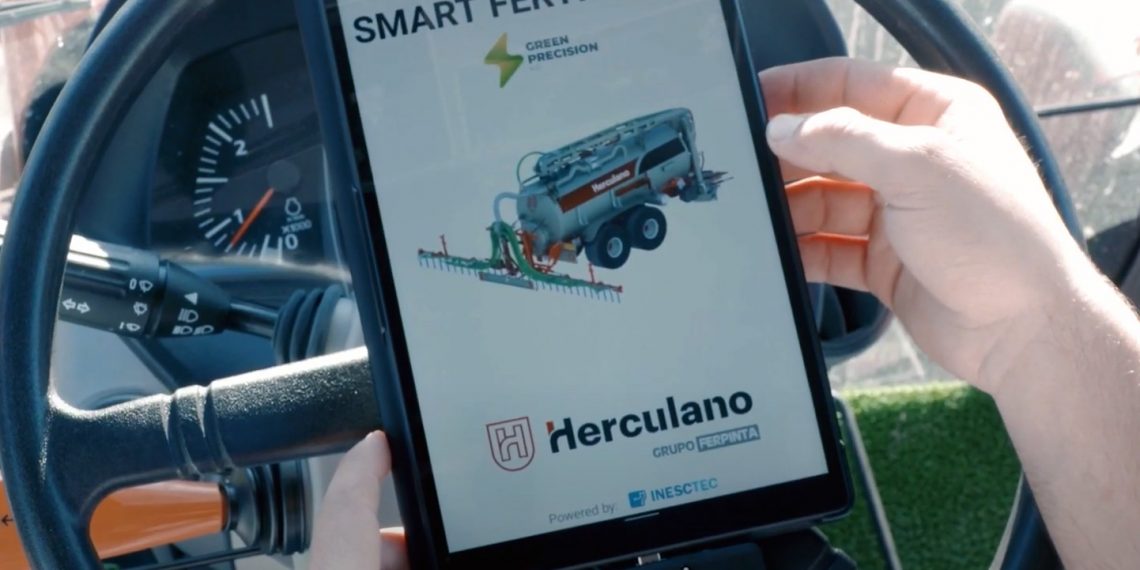Producing more, but with less fertile land available: this is one of the future’s main challenges. Mainly because there will be more than nine billion people in the world, by 2050, and it is estimated that to feed the population, we must increase production by 70%. As if that weren’t enough, there has been an increase in the costs of mineral fertilisers; hence, there’s an urgent need to develop a cost-effective solution to support farmers. This is where liquid manure, SMART FERTILIZERS technology and INESC TEC come in.
As part of the SMART FERTILIZERS project (which ended in March), INESC TEC developed a sensing and automation technology in a cistern to fertilize soils with liquid manure – a fertiliser resulting from the mixture of animal and food waste and washing water – and apply it according to the needs of the location.
Drivers of agronomic intensification, fertilisers gain relevance in the context of precision agriculture, with liquid manure perceived as a sustainable and organic alternative. This product carries macronutrients like nitrogen, phosphorus, and potassium – which cannot be discarded in the agronomic process of agricultural holdings.
SMART FERTILIZERS brought together the experience of Herculano, a company that develops agricultural machinery, like cisterns and implements, and INESC TEC technology. How? The company established in Oliveira de Azeméis … aimed to develop a cistern for precise application of manure: the right amount, in the adequate location, and at the right time. Hence, they focused on a sensor – the Near Infra Red (NIR) sensor – to “read” and understand the amount of each relevant macronutrient.
These sensors have a high commercial value and one of the challenges was to develop this technology at a competitive value. “INESC TEC main challenge was the development of a cost-effective modular technology for small and medium-sized producers, which could be used in the new Herculano cisterns, but also in the existing machinery”, said Filipe Neves dos Santos, researcher at INESC TEC Centre for Robotics in Industry and Intelligent System (CRIIS) and project leader.
The production of manure in Portugal is concentrated mainly in two regions: Douro and Minho, and Beira Litoral; but there are several “hotspots” of animal production with the potential to apply this technology all over Europe. The environmental issues associated with these hotspots can be mitigated by smart agronomic valorisation of animal effluents, thus promoting carbon storage and soil fertility.
“Thanks to this technology, developed within the scope of the SMART FERTILIZERS project, there is enormous potential to the valorisation of liquid manure by the producers. The solution provides real-time composition of the manure in terms of macronutrients and is able to adjust the application according to the need of the terrain and crop”, added the researcher.
Ricardo Teixeira, from Herculano, also pointed out economic aspects: “Due to the high costs, mainly caused by the increase in energy prices, fertiliser manufacturers are limiting their production. This threatens the availability of chemical fertilisers for the upcoming season”.
According to him, SMART FERTILIZERS (supported by COMPETE 2020 under the Research and Technological Development Incentive) shows “significant potential to support the success of farmers around the world”.
The researcher mentioned in this news piece is associated with INESC TEC.




 News, current topics, curiosities and so much more about INESC TEC and its community!
News, current topics, curiosities and so much more about INESC TEC and its community!